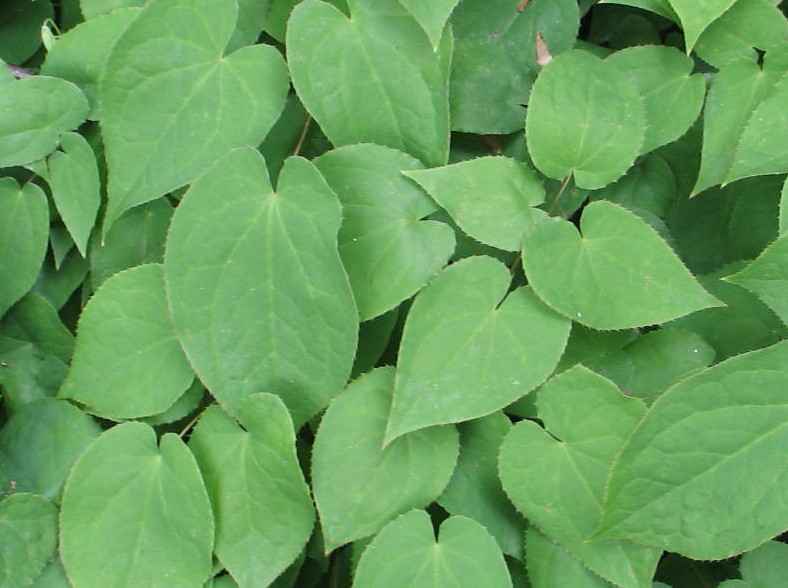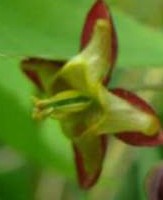 A native of southern and central Europe, alpine barrenwort is a low growing herbaceous perennial that forms attractive clumps of foliage. The medium green leaves are compound and each leaflet is heart-shaped with a pointed tip, and up to three inches long. The leaves have a pink tinge when they emerge in spring, mature to green, and take on a red tinge in the fall. Clusters of twelve to twenty flowers are produced in loose racemes above the foliage in spring. The sepals are dull red and the petals are pale yellow and slipper shaped. The plant is rhizomateous and spreads more quickly than most other epimediums. The cultivar ‘Rubrum, has brighter red sepals and brighter yellow petals. Apline barrenwort makes an excellent groundcover or edger for a shady area. The common name barrenwort comes from the belief that drinking extracts of the plant causes infertility.
A native of southern and central Europe, alpine barrenwort is a low growing herbaceous perennial that forms attractive clumps of foliage. The medium green leaves are compound and each leaflet is heart-shaped with a pointed tip, and up to three inches long. The leaves have a pink tinge when they emerge in spring, mature to green, and take on a red tinge in the fall. Clusters of twelve to twenty flowers are produced in loose racemes above the foliage in spring. The sepals are dull red and the petals are pale yellow and slipper shaped. The plant is rhizomateous and spreads more quickly than most other epimediums. The cultivar ‘Rubrum, has brighter red sepals and brighter yellow petals. Apline barrenwort makes an excellent groundcover or edger for a shady area. The common name barrenwort comes from the belief that drinking extracts of the plant causes infertility.
Type: Herbaceous perennial
 Bloom: Clusters of twelve to twenty dull red and yellow flowers in loose racemes appear in spring
Bloom: Clusters of twelve to twenty dull red and yellow flowers in loose racemes appear in spring
Size: 6-9” H c 12” W
Light: Part shade
Soil: Prefers humusy, fertile, dry to medium, well-drained; drought tolerant when established
Hardiness: Zones: 3-8
Care: Cut back foliage in late winter to appreciate flowers
Pests and Diseases: None of significance
Propagation: Fresh seed, division in fall
Companion plants: Vancouveria chrysantha, Vancouveria planipetala, Dicentra formosa (western bleeding heart), Smilacina racemosa (false Solomon’s seal), Mahonia nervosa (low Oregon grape)